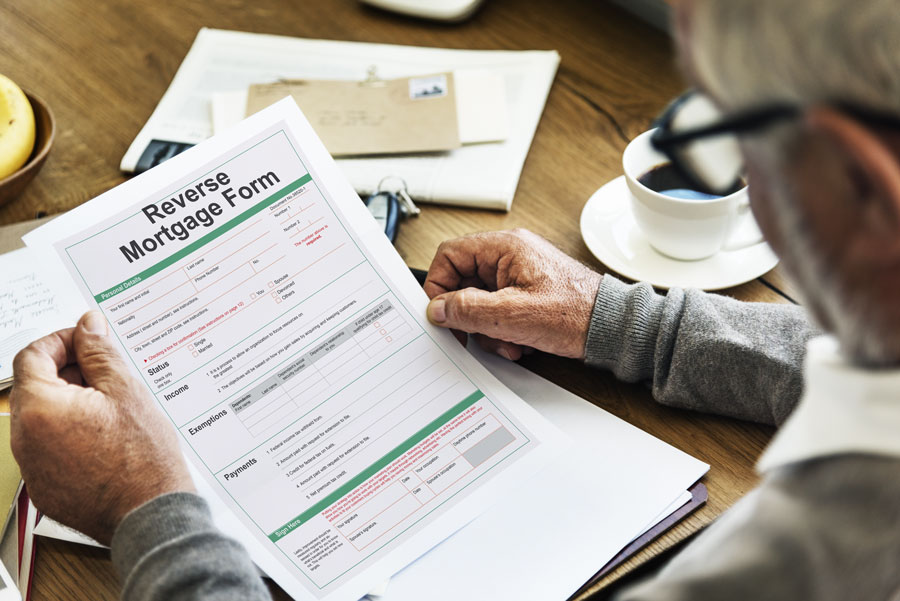Reverse Mortgage Refinancing
Did you know you can refinance a reverse mortgage when economic conditions make it wise to do so? With high loan limits and growing home values, refinancing a reverse mortgage is gaining in popularity with many seniors taking advantage of these current changes.

Refinancing traditional mortgages to obtain more favorable terms as you pay down your home loan is a fairly common practice that can save you money in the long run. However, some people may not be aware that it is also possible to refinance a reverse mortgage, which is a loan that allows older adults to tap into the equity they’ve built up in their home without selling it or making mortgage payments.
In this article we’ll discuss how a reverse mortgage refinance works, and when it would be a good time for someone to do so from the standpoint of financial effectiveness.
What is a Reverse Mortgage?
Essentially, a reverse mortgage is a loan. A homeowner that is over the age of 62 and has a certain amount of home equity built up that they can borrow against the value of their home and receive the loan in a variety of ways, including one lump sum, fixed monthly payments, or a line of credit.
Reverse mortgages can provide much-needed cash for seniors whose net worth is mostly tied up in the value of their home, and the money can be used for a variety of reasons, such as funding retirement, paying for home improvements, and so on.
As opposed to a traditional home loan, a reverse mortgage loan recipient does not have to make any monthly payments on the loan. In contrast, the entire balance of the loan is due when the borrower passes away, moves out permanently, or sells the home. The value of a reverse mortgage is federally mandated not to exceed the value of the home itself; in the event that this does occur, neither the borrower nor the borrower’s estate will be responsible for the difference.
Reverse mortgages don’t have income or credit score requirements, but they still have rules for qualification. All borrowers on the home’s title must be at least 62 years old; the older you are, the more funds you can receive from a HECM (FHA’s reverse mortgage program). In addition, you must either own your home free and clear or have a substantial amount of equity (at least 50 percent) and you must live in your home as your primary residence for the life of the reverse mortgage. You are also required to meet with a Department of Housing and Urban Development (HUD)-approved reverse mortgage counselor to make sure that you are fully versed in the process and loan terms.
What is Refinancing?
A mortgage refinance is when you pay off an existing mortgage with money from a new loan. The reason most homeowners will refinance is simple: to secure more favorable loan terms, such as setting a lower interest rate or a shorter term for the loan. Once secured, your lender uses the new loan to pay off the old one, leaving the borrower with a single loan and one monthly payment.
Refinancing a Reverse Mortgage
Refinancing is a popular tool for improving terms of traditional mortgages; however, some people may not realize that it is also an option if you possess a reverse mortgage. Much like the act of refinancing a traditional mortgage, refinancing a reverse mortgage is basically trading in your existing loan for a new better one. The new mortgage could either be another reverse mortgage or a traditional mortgage.
If you decide upon a new reverse mortgage, the new loan amount will be based on your age, the value of your home, and the interest rate. The loan proceeds can be received as a lump sum, a line of credit, regular monthly payments, or a combination of the latter two options.
However, if you refinance into a traditional mortgage, the details of the loan will depend upon your income, credit score, and interest rate. If an individual needs funds to assist with maintaining their lifestyle during their retirement, they can choose a cash out refinance; this loan type replaces your current mortgage with a larger loan, with the borrower receiving the difference in cash.
A home equity conversion mortgage (HECM) is the most common reverse mortgage, and it is insured by the Federal Housing Administration (FHA) and offered by FHA-approved lenders.
Eligibility Requirements for Reverse Mortgage Refinance
The requirements to refinance your reverse mortgage are very similar to those for getting a reverse mortgage in the first place. These requirements are as follows:
- Available to those age 62 or older.
- Own the property outright or have built up considerable equity in it.
- You must live in the home as your primary residence.
- Not be delinquent on any federal debt (taxes, student loans, etc).
- Have the financial resources to pay property taxes, homeowners insurance, homeowners association fees, and home maintenance.
- Participate in a consumer information session given by a HUD-approved counselor.
- Have not refinanced your reverse mortgage within the previous 18 months.
Other eligibility requirements include the property meeting FHA requirements, including having adequate insurance and being free of any health or safety hazards.
Why Refinance a Reverse Mortgage?
There are numerous beneficial reasons one may wish to refinance a reverse mortgage, such as:
- Your home’s value has appreciated, which translates to its home equity possibly having increased as well; if this is the case, it may be possible to get more cash from a new reverse mortgage.
- If interest rates have dropped since you originally got your reverse mortgage, a new reverse mortgage could allow you to translate your existing loan into a larger payout with lower overall interest when the loan comes due.
- You may wish to add a co-borrower to the loan, such as a spouse or partner; refinancing your mortgage is the only way to do that.
- A new reverse mortgage could allow you to access more equity if HECM limits have increased since you took out your original loan.
- You may want more cash than your current reverse mortgage provides; a cash out refinance into a traditional mortgage allows someone to borrow more money than they owe and receive the difference in cash.
Pros and Cons of a Refinance Reverse Mortgage
Getting a reverse mortgage refinance can allow a borrower to access more home equity and lower interest rates, in addition to setting up new payment options that may be advantageous to them; they can also add a new co-borrower to the loan. Conversely, refinancing involves fees that could potentially eat into the equity built up in your home faster, making it harder to pay back the loan.
Paying Off a Reverse Mortgage
The reverse mortgage becomes due when the borrower either sells the house, moves out, or passes away. Reverse mortgage loans are typically repaid using the proceeds from the sale of the home in question.
Refinancing a reverse mortgage could be a very good idea if the value you’ve built up in your home has increased, if your financial situation has changed since you took out the original loan, or if HECM loan limits or interest rates have changed for the better. But despite whatever reason you may have for refinancing a mortgage, always do your due diligence to make sure it is the best financial option for you, and make sure you shop around to find the best possible deal for your circumstances.

